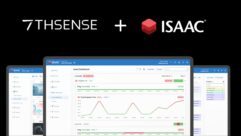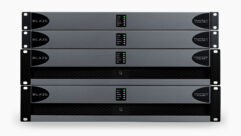
Getting a Feel for Windows 8 on the Tablet and the Desktop
Jun 18, 2012 2:21 PM,
By Jason Bovberg

I just got back from the Microsoft TechEd 2012 show in Orlando, Fla., and although I was there mostly representing Windows IT Pro and its enterprise IT audience, personally I was most interested in the new Windows 8 operating system that will soon be making its way into my home office. I took some time on the show floor to check out the new OS in a series of hands-on labs (on both touchscreen desktop monitors and tablets) and found it to be a fascinating experience—one that should prove richly satisfying in the connected home.

Today, Microsoft held an event in Los Angeles, where it made the weighty announcement of Microsoft Surface, an awfully cool tablet/desktop hybrid that will directly compete with the industry behemoth Apple iPad. Based on my experiences with Windows 8 at the show, this could be a very interesting development indeed.
For me—admittedly a long-time user of Windows products—the fascination with the potential of a Windows tablet comes from my experience with Windows Phone, which I’ve been using for over a year now. I’ve long felt that Windows Phone is a vastly underappreciated smartphone OS or at least a more-than-viable alternative that offers a very different phone experience. With its customizable Metro-tile interface and fluid integration with social networks (e.g., Facebook) and the home-desktop experience (e.g., Microsoft Office), the Windows Phone UI appeals to this particular user much more than the admittedly excellent iPhone, with its “whack-a-mole” array of page after page of apps.
It’s no secret that Windows 8 carries forward the basic UI feel of Windows Phone to the tablet and desktop, and my experience with it at TechEd confirmed that. At the giant hands-on lab area of the show floor, I first toyed with Windows 8 on a large touchscreen desktop monitor, moving the Live Tiles around and arranging them into groups—in general, customizing the Windows desktop in much the same way that I customize my Windows Phone screen. You can use a combination of touch and mouse commands to get the best of both worlds; you don’t have to abandon your tried-and-true mouse-and-keyboard lifestyle, but the touch features add a new dimension to the computing experience that brings it in line with what you know from your on-the-go phone experience.

I have to admit, it felt a little strange swiping tiles across the large expanse of that desktop screen. On a small phone surface, accessing an app to the lower right and then immediately tapping an onscreen feature at the top right is a simple matter of moving your finger a couple inches, but doing the same motion on the desktop means you have to move your finger as much as a couple feet. Still, the experience is invigorating and new, and these problems seem to be no more than the kinks of trying something new.
More interesting to me, personally, is the use of Windows 8 on the tablet. I’ve been patiently waiting for the right tablet to come along that is sufficiently interesting to make the leap into that tech arena. I’m not saying this rumored Microsoft tablet will be “the one,” but it has a lot of potential. The early pen-based tablets felt archaic even when they came out, so I shrugged them off. Apple’s iPad felt halfway revolutionary with its glossy touchscreen, but I already had an iPod touch, and the only thing the iPad seemed to offer was the larger real estate and a blistering price tag. I could wait. The Amazon Kindle Fire came closest to finding my sweet spot, with its focus on books and its relative value, but again it was just another disconnected device, so I decided to wait. It’s only now that Windows 8 is on the horizon that I feel compelled to add tablet computing to my connected home.
In many ways—and again I stress that I’m coming from a Windows-centric household (as are many, many other consumers)—the combined Windows 8 and Windows Phone experience will offer a connected, consumerized computing environment that bests that of Apple’s iPhone and iPad. Windows 8 offers more opportunities for personalization/customization, and it gives me a far greater feeling of connectedness with the rest of my home computing, including my word processing and email, basic file access, the aforementioned keyboard integration when I want it, and my Xbox 360 gaming. Finally, I can look forward to a tablet-computing experience that’s not just another device that does something cool but rather a cool device that integrates smoothly with my existing home-computing infrastructure. It’s all about compatibility: I’ll have one OS for my desktop, laptop, tablet, and phone. It’s THAT kind of addition I want to make to my connected home.
Word at TechEd was that touchscreen monitors are becoming very reasonably priced, so perhaps that capability is closer to my desktop than I realize, too. Many consumers are on-the-fence or resistant to the very idea of a touchscreen desktop, and that mindset is blinding a lot of people to the very real aesthetic and usability improvements of Windows 8. And I admit that I have some of the same reservations. But after actually using the technology at TechEd, I’m excited about the changes.
And I’m even more excited that Microsoft is finally making a real stab at a market that has eluded it for too long. It got in far too late on today’s smartphone scene, regardless of the fact that Windows Phone is quite compelling. And it has foundered in the tablet-computing game, even though it was there from the start. Now, it seems Microsoft is bringing both of those markets together under the umbrella of its most successful arena—the desktop—and it very well may finally shine in all of them.










